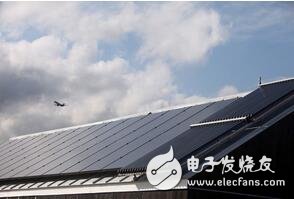US 2020 shooting plan, solar cell cost reduction
In order to actively promote the development of solar energy, the United States launched the “SunShot IniTIaTIve†to promote industrial technology and reduce the cost of solar cells. One of the goals is to reduce the cost of solar cell installation to US$1 per watt by 2020, but now It is expected that in the first half of 2017, the target will be reached early, and the advancement will be 3 years.
In 2011, the installation cost per watt of solar cells was about $4. At that time, it was reduced to only one-fourth of the cost of one dollar to make solar energy competitive in the market. It sounds like a fantasy, but the industry Development is often more bizarre than imagined. Since 2011, solar energy has not only been a sharp drop in component costs, but with other links in the system, including inverters, fixed-day systems, and even labor costs, it has fallen rapidly, leaving only “soft†costs. There is no decline, such as obtaining customer marketing and administrative costs.
In 2016, the component price dropped from US$0.6 per watt to US$0.3. Inverter manufacturers outside the US continued to cut prices. New system equipment vendors also actively rushed to the market and offered more and more attractive prices. With the price of each link dropping rapidly, today's large-scale solar plan developers are thinking differently. They are no longer eager to purchase the lowest-priced components, but think about the overall system cost, such as using higher performance. The fixed-day system, although the total project cost is higher, but the power generation effect is better, and the overall power generation cost is lower.

The most surprising thing is that when the cost has fallen to a low of $1 per watt, of which $0.3 is the “soft†cost of installing labor, including recurrent expenses, vendor gross margins, engineering design, and approved administration. Costs, etc. Many of these costs are difficult to compress and become a challenge to further reduce costs.
With the arrival of Trump, new energy policies such as the shooting plan may be revised or cancelled. If there is no plan to shoot the sun, can solar energy still achieve the goal of rapidly reducing costs? The industry believes that this is affirmative, because in fact, the shooting plan itself has limited help to achieve the goal early. The biggest reason for the rapid price reduction of solar energy is that China's large-scale production capacity is opened. This supply floods, but it also touches China itself. The spurt of solar energy slowed down, causing a serious imbalance between supply and demand in the global environment, thus pushing prices down to the lowest point, which has nothing to do with the shooting plan.
However, the market still gives some affirmation to the shooting plan. Even if there is no credit for the shooting plan, the shooting plan and other policies will release the message of sprinting to the industry. The investment funds will gather in the new energy industry and the entrepreneurs compete with each other. By making the market more efficient and accelerating the industry's progress, this atmosphere also makes customers and suppliers more willing to tolerate some risks.
However, in many government policies, perhaps the Department of Energy's loan program has more utility than the launch plan. The Department of Energy's loan program is relatively successful. Of the $32 billion in loans, the bad debt rate is only 2.33%, which is lower than most financial institutions. This means that the US Department of Energy mostly subsidizes correct and developed companies and plans. As a result, it has earned huge interest income and has so far earned US$1.65 billion. The Department of Energy's loan program is also in line with Trump's policy goal of increasing investment infrastructure to increase employment, and it is not just funding new energy, but also carbon storage coal-fired technology, so it may not be suspended under the Trump regime.
In any case, even if the shooting plan is stopped by Trump from now on, the downward trend of solar energy prices has already started, and it will not change. Solar energy was once an industry that can only rely on policy subsidies to survive. Now it is in the market itself. It is competitive, it can continue to develop without government policy assistance, and government policies are no longer a matter of life and death.
Indoor Equipment Box,White Indoor Base Box,White Deluxe Base Box,White Indoor Distribution Box
Shenzhen Jingtu Cabinet Network Equipment Co., LTD , https://www.jingtujigui.com